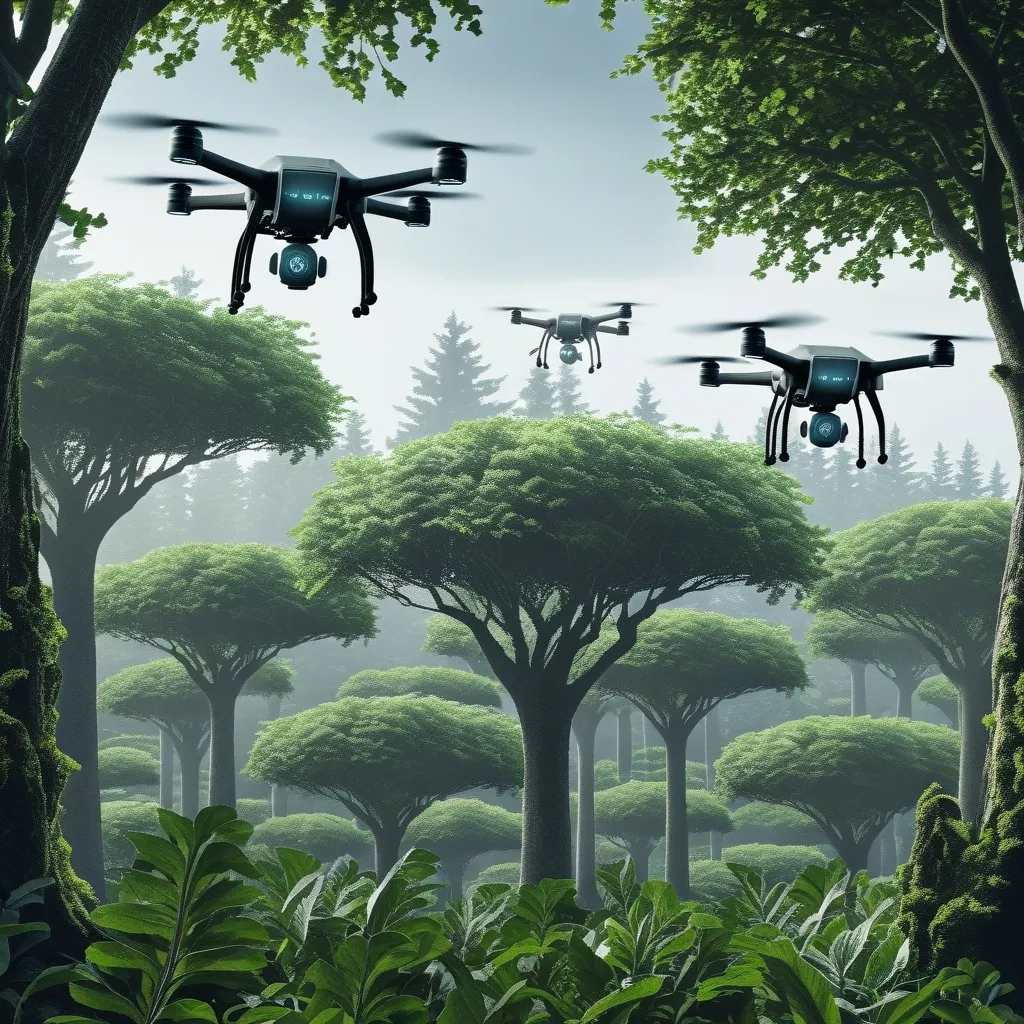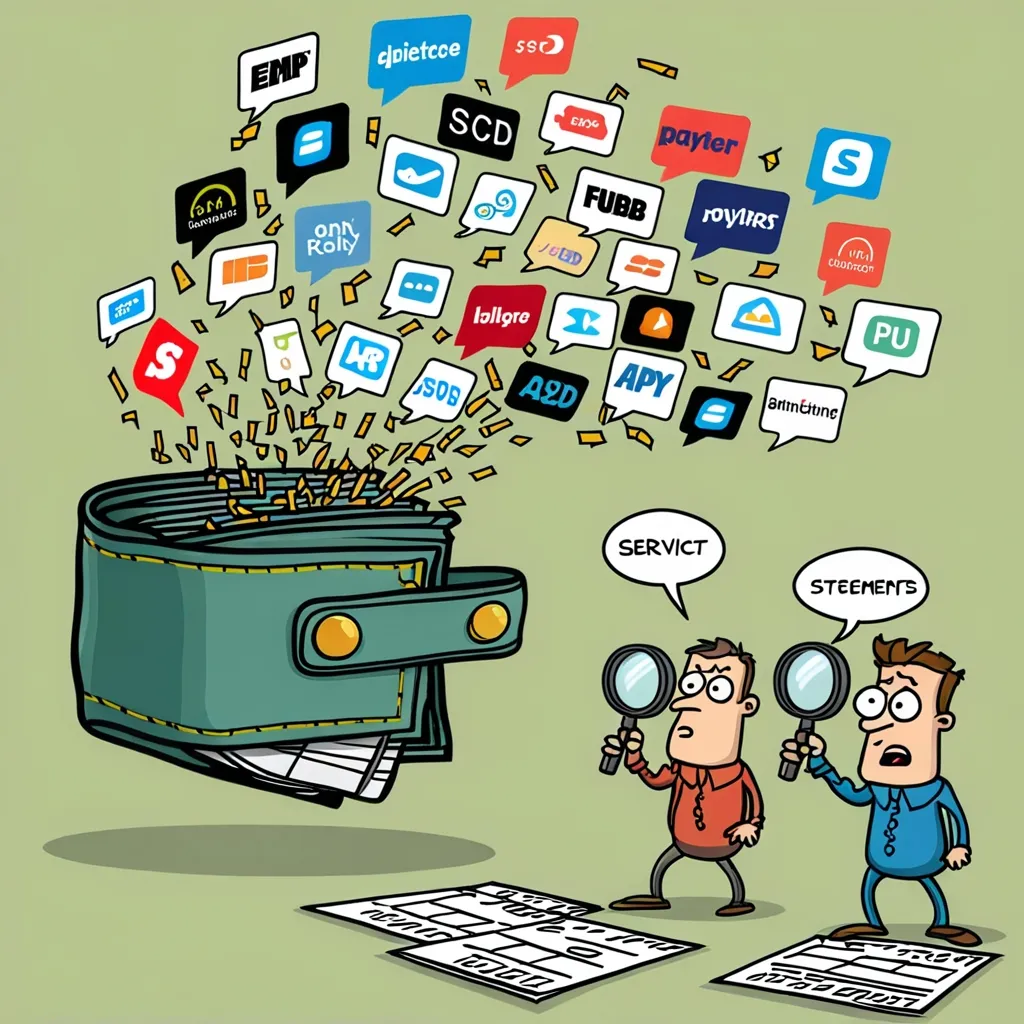Drones and AI are revolutionizing how we manage forests and fight climate change. It’s pretty wild when you think about it - these flying robots are zipping through the trees, gathering data that used to take teams of people trudging through the underbrush with tape measures. Talk about a game-changer!
Let’s chat about this cool company called AirForestry. They’re doing some seriously impressive stuff with drones and artificial intelligence to keep our forests healthy and soak up more carbon dioxide. It’s like giving Mother Nature a high-tech helping hand.
So picture this: massive drones, we’re talking 6 meters across, hovering above the forest canopy. These bad boys are equipped with all sorts of fancy sensors and cameras. They’re not just taking pretty pictures though - they’re creating detailed 3D models of the entire forest. It’s like Google Earth on steroids, but for trees.
Now, why is this such a big deal? Well, forests are like nature’s air purifiers. They suck up tons of CO2, which is great for fighting climate change. But here’s the thing - we need to know exactly how much carbon these forests can store. That’s where AirForestry’s tech comes in clutch.
Their drones can measure the height, thickness, and even the wood density of trees without ever touching the ground. It’s mind-blowing when you think about it. No more trampling through the undergrowth, potentially damaging delicate ecosystems. These drones are like ninjas - in and out without leaving a trace.
But wait, there’s more! AirForestry isn’t just about measuring trees. They’ve developed this crazy cool harvesting tool that attaches to the drone. It can actually lift entire tree trunks out of the forest without messing up the forest floor. It’s like a giant, flying claw machine, but way more precise and eco-friendly.
Now, you might be thinking, “Okay, but how does this actually help with climate change?” Great question! By getting super accurate measurements of forest composition, scientists can create detailed maps of carbon storage. This helps them figure out how quickly we need to cut emissions to keep our planet from turning into a toaster oven.
The AI part of this whole setup is pretty sweet too. These drones aren’t just flying around willy-nilly. They’re using artificial intelligence to navigate, identify specific trees, and perform harvesting with incredible precision. It’s like having a team of robot lumberjacks that never get tired and always hit their mark.
And let’s not forget about the environmental perks. Traditional logging can be pretty rough on forests. But with AirForestry’s method, the impact is way less. The drones are electric, so no nasty emissions. Plus, they leave branches behind as natural forest food, helping keep the ecosystem healthy.
It’s not just about the environment though. This tech could be a game-changer for the forestry industry. Imagine being able to harvest trees more efficiently and sustainably. It could mean better profits for forest owners and healthier forests for everyone. Talk about a win-win!
AirForestry isn’t the only player in this space, though. There’s a whole bunch of cool climate tech popping up. Some folks are using LiDAR to scan below the forest canopy, kind of like x-ray vision for trees. And get this - there’s even a satellite called Biomass that’s keeping tabs on forest carbon from space. We’re living in the future, folks!
Now, you might be wondering, “Is all this tech really necessary? Can’t we just plant more trees and call it a day?” Well, it’s not quite that simple. Sure, planting trees is great, but we need to make sure we’re managing our existing forests as effectively as possible. That’s where companies like AirForestry come in.
Think about it this way: our forests are like giant natural batteries storing carbon. But just like your phone battery, we need to know exactly how much charge they have left. AirForestry’s tech gives us that crucial information, helping us make smarter decisions about how to protect and enhance these vital ecosystems.
It’s not just about the trees either. Healthy forests support all sorts of wildlife and plant species. By using drones and AI to manage forests more sustainably, we’re helping to protect biodiversity too. It’s like giving Mother Nature a high-tech maintenance crew.
Now, I know what you’re thinking. “This all sounds great, but what about jobs? Won’t these drones put lumberjacks out of work?” It’s a valid concern, but here’s the thing: this tech isn’t about replacing people, it’s about making their jobs easier and more efficient. There will always be a need for skilled forestry workers, but now they’ll have some seriously cool tools to work with.
And let’s not forget the bigger picture here. Climate change is a massive challenge that affects all of us. By leveraging technology like this, we’re giving ourselves a fighting chance. It’s like having a secret weapon in the battle against global warming.
The folks at AirForestry have a pretty awesome vision. They want to “reinvent forestry for good” - making it more productive, resilient, and beautiful. It’s not just about cutting down trees more efficiently. It’s about creating a whole new approach to forest management that works with nature, not against it.
As we look to the future, it’s clear that technologies like this will play a crucial role in our efforts to combat climate change. But it’s not just about the tech. It’s about changing our mindset, about seeing our forests not just as resources to be exploited, but as vital ecosystems that need our protection and care.
So next time you’re out for a walk in the woods, take a moment to look up. That buzzing sound you hear might not be a bee - it could be a high-tech drone working hard to keep our forests healthy and our planet cool. Pretty amazing, right?
In the end, it all comes down to this: we’ve got one planet, and we need to take care of it. Companies like AirForestry are showing us that with a little creativity and a lot of innovation, we can find new ways to work with nature, not against it. And who knows? Maybe one day, thanks to these flying forest guardians, our grandkids will inherit a world with healthier forests and a more stable climate. Now that’s something worth drone-ing on about!






